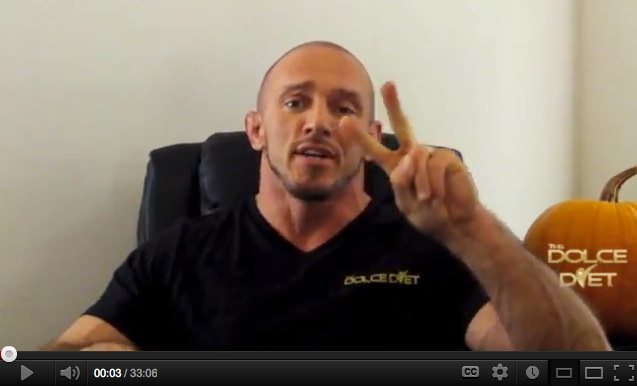
VIDEO: MIKE'S EXCLUSIVE FACEBOOK Q&A – EP. 2

Check out this video where Mike answers over 65 different questions on a variety of topics asked by members of The Dolce Diet Facebook page! Feel free to ask your own question and join in the fun!


Check out this video where Mike answers over 65 different questions on a variety of topics asked by members of The Dolce Diet Facebook page! Feel free to ask your own question and join in the fun!
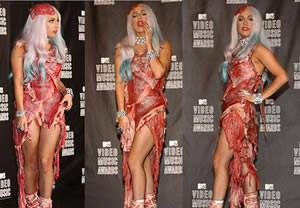
by Mike Dolce
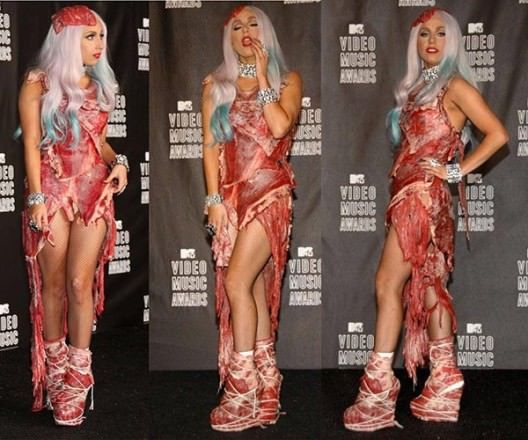
The increased popularity of Mixed Martial Arts has the words “weight cut” falling off people’s lips like it’s a trend. In fact, the weight-cut process walks a very precise, often dangerous line between what is healthy and what is hapless, and should not be taken lightly – pun definitely intended!
I define a weight cut as a temporary reduction of the body’s water volume. Keyword here? TEMPORARY!
A weight cut is something an athlete does for a weight-class delineated competition. This athlete is typically already at a healthy bodyweight with an ideal ratio of lean mass to bodyfat while training for his or her competition.
Weight loss, is something most people pursue in an effort to become healthier, leaner and to create the ability to live a more vibrant, fuller life. Weight loss focuses on the elimination of non-functional weight – the weight that is bogging you down and getting you nowhere! It interferes with our function as a healthy and thriving individual.
If you weigh 195 lbs. at 20 percent body fat you have 39 lbs. of body fat and 156 lbs. of muscle, bones, skin and organs, or functional weight.
At 20 percent body fat you have no idea what your abs look like and are at a high risk factor for heart disease, diabetes and early death.
Now, if you weigh 195 lbs. at 10 percent body fat, you look absolutely amazing. You only have 19.5 lbs. of nonfunctional fat, most of which is insulation from the environment, protects your joints and ligaments and serves as readily usable energy. You also have 175.5 lbs. of functional bodyweight, which is quite a lot compared to the chubbier version of yourself.
How different is 20 lbs. of muscle? I like to tell people to picture a 16 oz. steak sitting on your dinner plate. Now multiply that by 20 and stick them all over your body like Lady Gaga’s meat dress. Yes, 20 lbs. of lean muscle is quite substantial.
What does 20 lbs. of body fat look like? A great visual would be to fill up two entire gallon milk jugs of butter and cottage cheese, plus another two liter soda bottle of the same and pour it in a backpack, or better yet a REALLY BIG fanny pack sloshing around your hips! How would it feel slugging around that load of lard???
For the average man, we should maintain body-fat levels at approximately 10 percent. I don’t care if you are happy being 12 percent or you say, “I’m too old to be lower than 15 percent,” – that is your preference. You can drive around in a ’89 Honda Accord with low miles, but have you seen that new Cadillac CTS Coupe?!
Professional athletes should be around 7 percent for competition purposes. With my athletes, I make sure they are at 7 percent body fat three weeks before competition so we can increase their calories as competition nears. In essence, we feed them onto the scale.
The last couple pounds, (or dozen pounds depending on the athlete), is simply a matter of adjusting electrolytes, stimulating their metabolism and managing their digestive environment. A much simpler way of putting this is to feed them familiar, nutrient dense, easy to absorb foods, at even intervals, but not so much to slow digestion, in fact, just enough to speed it up.
Ladies, you should aim for 20 percent body fat as your daily walk around weight and closer to 16 percent for most higher levels of athletics.
This means the average 130 lb. woman at 20 percent body fat would hold 26 lbs. of non-functional body fat and 104 lbs. of functional lean mass weight.
That same female, if she were a competitive athlete, would best be suited in the vicinity of 16 percent body fat, would carry 20.8 lbs. of non-functional body fat and 109.2 lbs. of functional lean mass weight.
It means, do you really want to look your best or are you going to be happy with just looking a little better, which is fine but it is well below your potential.
Let’s face it, life is much more enjoyable with your clothes off! Before you drag this article into the gutter, I’m referring to the confidence you feel when you walk into a room with a tight waistline hidden behind your little black dress or form-fitting suit.
Who doesn’t want to be the first one in the pool with zero reservations about pulling off your shirt?
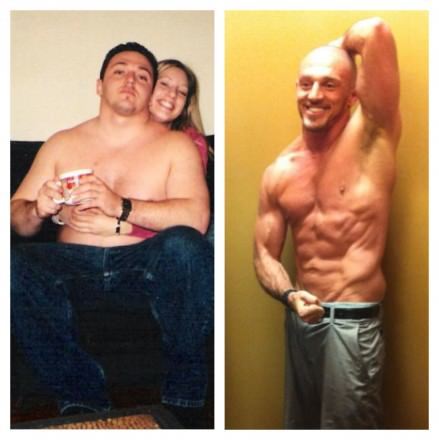
Why wouldn’t you want to keep the lights on when you are, umm, getting undressed?
The point is, aim for your best, enjoy where you are but always strive to do better.
Take it from me. I used to weigh 280 lbs. while training as a power lifter. This was my choice, and even though my ego was constantly gratified with bigger numbers on the barbell and trophies on my mantle, I hated the feeling of my belly sitting on my belt as I drove in my truck.
Once I decided to change my goals and purse a longevity-based lifestyle, I immediately began to love myself. I had enormous energy, a much improved sense of self and also the confidence of setting a goal and seeing it all the way through to the end.
Above, is a picture of the new me at 195 lbs. at 5 percent body fat, and the old me who once weighed 280 lbs. at 22 percent body fat!
Many of us, myself included, must be focused on fat loss and functional bodyweight. Not “cutting weight.”
If you’re beginning your weight-loss journey and would like more information about my methods, please check out The Dolce Diet: LIVING LEAN, available in paperback and eBook at Amazon, Amazon UK, iTunes, Barnes & Noble and The Book Depository.
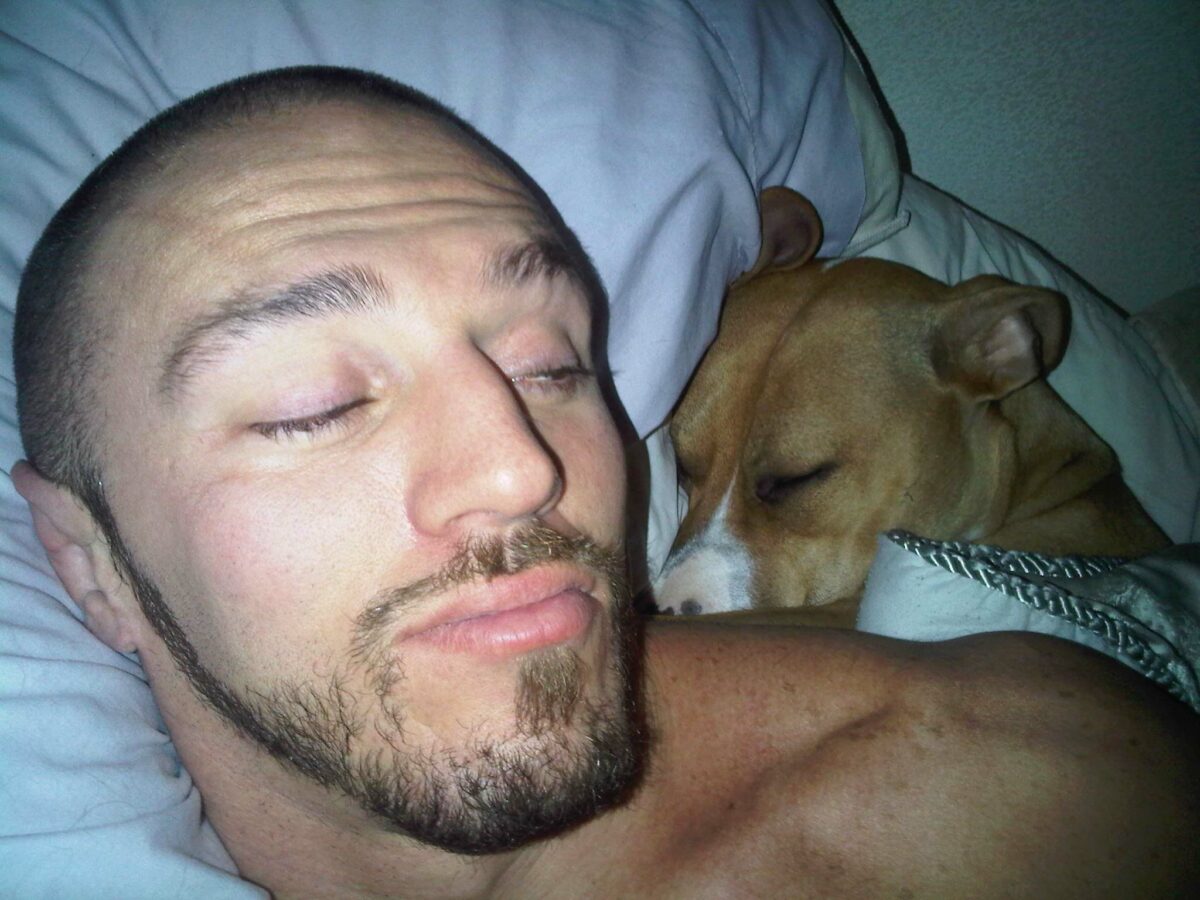
“Even a soul submerged in sleep
is hard at work.”
― Heraclitus, 530 BCE
Hi guys!

I’m sitting on a plane, flying over the Nevada desert on my way home from an amazing two-day seminar I conducted for a private group in Southern California.
We actually spent quite a bit of time discussing the need for proper sleep. The higher your quality of sleep, the faster your fat loss and muscle growth.
Sleep is when our bodies finally have a chance to repair and regenerate from all the hard training.
I function my best with 9 hours of sleep and if you think that makes me lazy, you should see what I accomplish in the 15 hours that I’m awake!!!
In fact, I always had trouble getting rid of that last little bit of belly fat when I was ‘only’ sleeping 7 hours per night, even though my diet and training was perfect.
As soon as I bumped it up to 9 hours, the fat fell off, the muscle piled on, and I was much more effective in business and at home.
As we age, we tend to sleep less. This means our body is not repairing and regenerating tissue at a rate necessary to outpace aging.
It is also not building bones and muscles, and in fact, our strength and skeletal fortitude begin to weaken and become frail. How many 80-year-olds do you see walking around that look like a good breeze could blow them away? That wasn’t the case 30 or 40 years ago when they were exiting the prime of their lives.
It is my opinion that time does not age us, our habits do. Habits are very much responsible for our level of health.
I call this your biological age. How old are your cells? How healthy? How vibrant? How efficient?
Think of your cells as a work force at a major manufacturing plant. Each cell is primed and excited, working at a thunderous pace with smiles on their little cell faces as they hum along completing their duties.
Now picture those same workers with beer bellies and cigarettes sticking out of their mouths. How hard do you think they’ll be working? How happy will they be? Do you think the quality of their work may suffer?
What happens if some of them stop showing up for work? A few per day, and then soon entire departments with special objectives, and lastly, the whole plant shuts down.
I prefer to constantly bring in fresh new workers in the way of vital nutrients, proper rest and big smiles to all those around me.
This is why I always say that THE DOLCE DIET is not a diet, but a lifestyle.
Most people think about losing weight and they only think about food and maybe some form of exercise. Rarely does one think about rest and recuperation.
Here is a great website that makes sleep scheduling very easy: Sleepyti.me
Try it and let me know what you think!

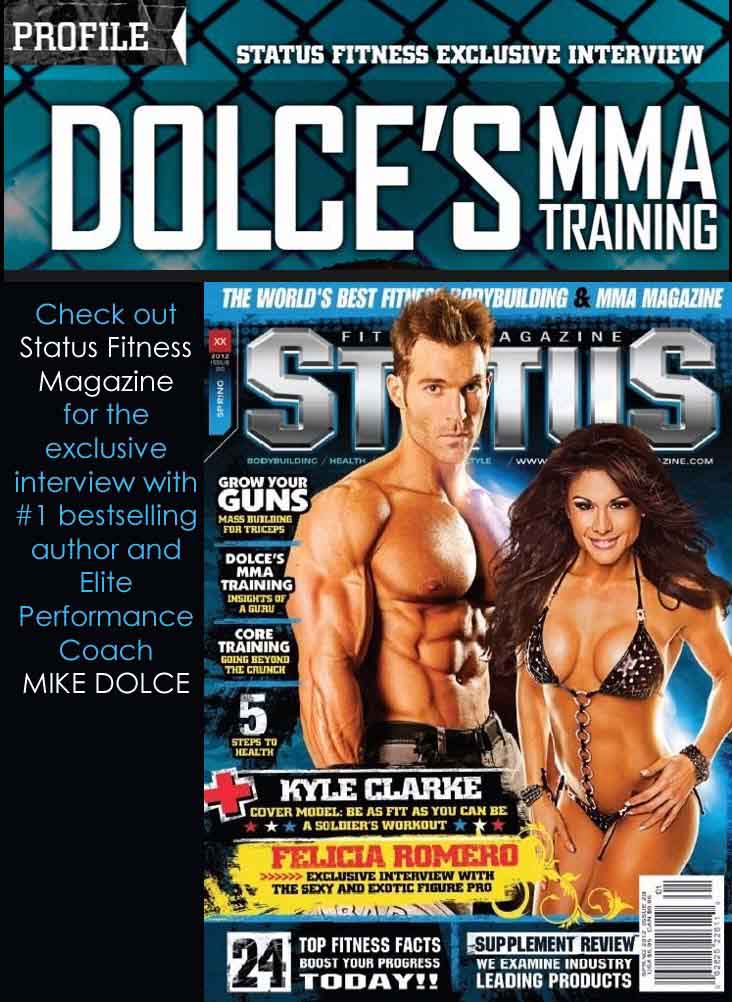 Be sure to check out Status Fitness Magazine’s exclusive interview with Mike Dolce in this month’s issue! On newsstands now!
Be sure to check out Status Fitness Magazine’s exclusive interview with Mike Dolce in this month’s issue! On newsstands now!


With their FREE worldwide shipping it’s easy to see why The Book Depository is one of our preferred retailers. And now they’re also offering an extra 10% off their already great prices. Use code APMA12 at checkout to get the additional discount. We’re not sure how long the promotion is good for, so act fast.
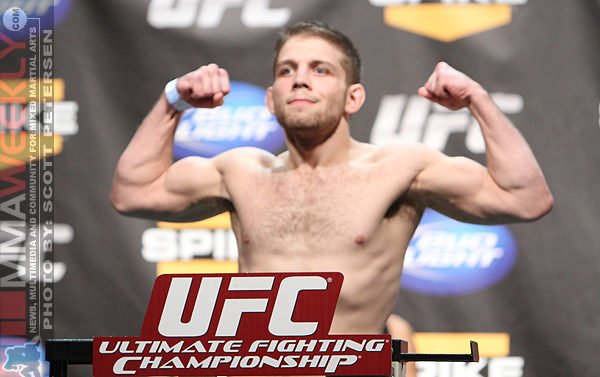
by Damon Martin
MMAWEEKLY.COM
Fighters finding new life at a different weight class is a tale as old as time in MMA, but how they go about making that change can be all the difference in the world.
UFC fighter Nik Lentz is making the move down to 145lbs for his next fight and he’s enlisted the best in the business to ensure he gets down there safely with the maximum performance possible.
MMA nutritionist guru and best selling author Mike Dolce has taken over the day-to-day duties to help Lentz as he moves down to featherweight for his next bout in the Octagon.
The two crossed paths at UFC on Fox 2 in Chicago when Lentz was facing Evan Dunham, while Dolce was in town helping old friend Chael Sonnen with his weight cut as he got ready for his bout against Michal Bisping.
“He was on the same card as Chael (Sonnen) in Chicago, so I was with Chael cutting weight and I saw Nik. We don’t know each other very well but we exchanged pleasantries and what not, and about two weeks after the fight I get a phone call from Nik,” Dolce said when speaking to MMAWeekly.com.
“He wanted to talk to me because he saw how easy Chael’s cut was, and it was so organized and all the things we were doing, and he wanted to talk to me just a little bit about what I knew.”
“We got talking and I asked him my basic list of introductory questions, body weight, things like that and it turns out two weeks after the fight with eating, not training at all, and eating pure junk food he was 173lbs. When he said 173lbs it took me back for a moment because normally after a fight, your body retains a ton of water, sodium, your body just naturally swells up. I realized he’s not a big lightweight, he’s a very small lightweight.”
Dolce has known about Lentz for a while, but had recently helped another fighter, Mark Bocek, prepare for a fight with him when getting his body right for the weight cut.
Once he found out how little weight Lentz actually had to cut, it amazed him he was competitive the way he had been at 155lbs considering some of the massive animals competing in that weight class.
Mark Bocek, who Dolce helped in preparation to face Lentz, walks around in the 190lb range before cutting down to 155lbs. Evan Dunham, who defeated Lentz on the UFC on Fox 2 card, bulks up to nearly 200lbs before a fight.
So hearing that Lentz was only cutting such a small amount of weight automatically put him at a disadvantage come fight time.
Dolce believes that the future for Lentz at featherweight is much, much brighter than an already solid career at 155lbs. Overall, Lentz had gone 5-2-1 (1 no contest) during his UFC career, with all fights taking place at lightweight.
“Nik is giving up 20lbs against really tough guys and taking them the distance. Imagine what this kid could do at 145. I really believe at 145, Nik Lentz will walk through the entire division and get the belt. I think he’s that good, I believe he’s that good,” said Dolce.
“I’m excited to be on board with him.”
The work has already begun for Lentz to make the cut down to 145lbs. Like with all his athletes, Dolce has stayed in constant contact with the fighter to make sure his daily routine is going well, and he’s hopeful for Lentz to make his featherweight debut later this summer.
However, if UFC matchmaker Joe Silva needs a late replacement, Lentz will be more than ready when the call is made.
“We work together everyday now. If Joe Silva called today and said we need you to make 145 on Friday, we’ll do it, done deal. We can do that if we have to,” said Dolce.
“I’d like to see him fight in July, maybe mid-July, this summer. To really give him to settle into the new weight class, deal with the new body weight. Basically, we’re giving him a high performance vehicle and we’d like to give him a little time to use all the bells and whistles, and all the new toys he has to play with.”

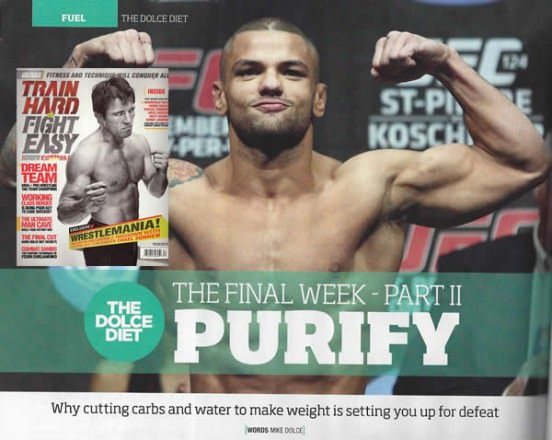 April’s issue of Train Hard, Fight Easy magazine features the second article in a three-part series written by renowned weight management expert and performance coach, Mike Dolce. The founder of The Dolce Diet™ details why cutting carbohydrates and water could be setting athletes up for defeat.
April’s issue of Train Hard, Fight Easy magazine features the second article in a three-part series written by renowned weight management expert and performance coach, Mike Dolce. The founder of The Dolce Diet™ details why cutting carbohydrates and water could be setting athletes up for defeat.
If we are only focused on the scale this method can work, but if we are concerned with maintaining vibrant health and producing a career defining performance, you may want to think twice.
Pick up Train Hard, Fight Easy magazine on all major newsstands now.
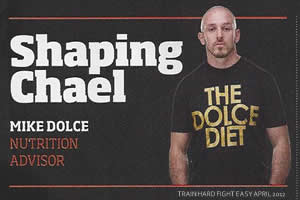
“Sonnen is a unique guy,” said Mike Dolce. “We can’t classify him, or define him.”
Get the answers to these questions and more in the APRIL 2012 issue of TRAIN HARD, FIGHT EASY Magazine as Mike Dolce, creator of the world renowned Dolce Diet™ shares some never before heard tidbits about one of the UFC’s greatest athletes.
Train Hard, Fight Easy Magazine is on newsstands now.
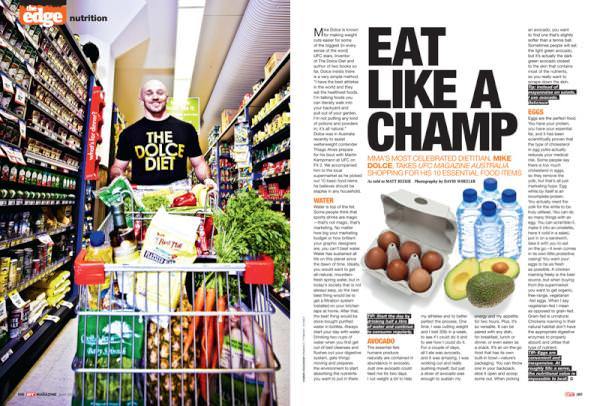
Mike took UFC Magazine Australia food shopping in Sydney where he explained his 10 essential food items. Read the article in this month’s Aussie edition of UFC Magazine on newsstands now!
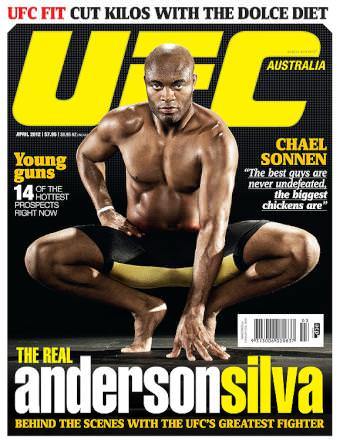

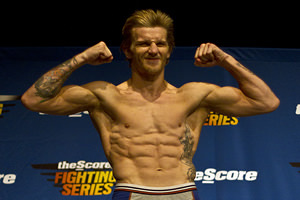
Congratulations to John Alessio on his recent unanimous decision victory over Ryan Healy. The two lightweights put on an exciting all-out war before a capacity crowd at Hamilton Place Theatre in Hamilton, Ontario, in The Score Fighting Series.